How to grow Typha
Also known as Miniature Reed Mace, Miniature Bulrush or Dwarf Cat Tail, Typha is a marginal aquatic plant. Typha enjoys shallow water depths and is easy to grow, making it the ideal addition to shallow garden ponds, bogs and aquatic gardens, especially for beginners.
Taking anywhere from 5-10 years to mature, Typha has thin, green and grass-like erect leaves with brown spiked flowers which can be used as cut flowers in dried arrangements. Growing to heights of 60cm and 45cm in spread, Typha is known as a ‘marginal’, which means it should be planted on the outside of a small pond or in a bog garden.
Typha’s rhizomes are avid spreaders, growing up to 20cm deep under the soil. Flowers are produced in July and August and the plant is frost-hardy so winter care and frost protection are minimal. Typha also enjoys full or partial sunlight and is unlikely to grow in full shade conditions.
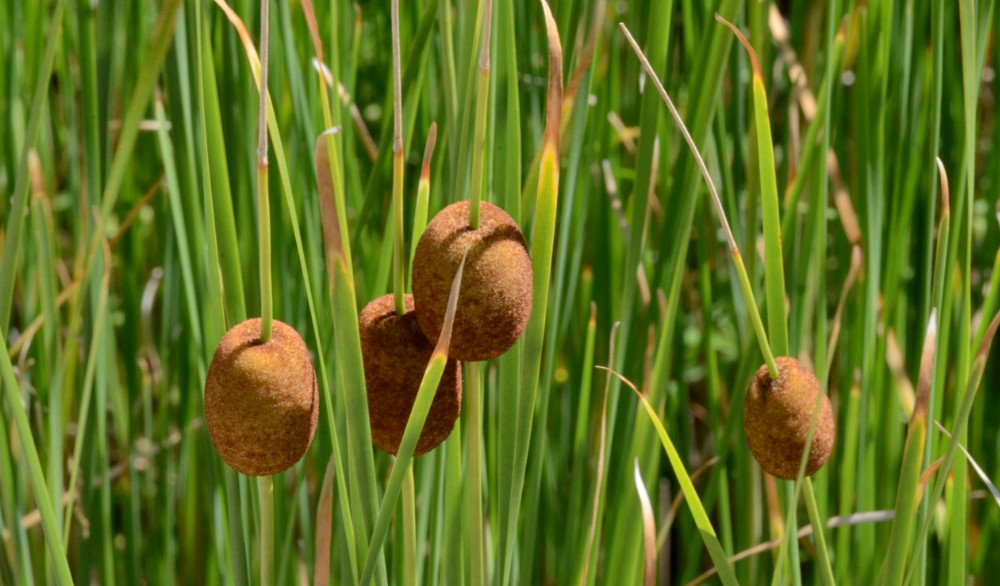
Key Information
Soil pH
Position
Hardiness

Where & when to plant Typha
When thinking about planting Typha minima, boggy soil is critical. The definition of boggy is “too wet and muddy to be easily walked on; marshy” and this is the best possible environment to successfully grow Typha minima in. As its rhizomes spread so enthusiastically, use a basket or container to plant in to prevent it from becoming too invasive. Typha minima are marginals - they must be grown on the outside of a pond or bog in its most shallow water depth.
How to plant Typha
One of the main things to consider when planting Typha is its penchant for boggy soil and sunlight. Typha minima will thrive in full sun, or partial shade and partial sun, to give the best possible growing results.
Fill an underwater basket with aquatic soil and add your young plant. If planting multiple Typha minima plants, give each at least 15cm of space between each so they can establish and spread their rhizomes.
Measure the water level on the outside of your pond, ensuring that is no higher than 10cm at its most shallow. If this position benefits from some sunlight and is right on the edge of your pond, this is the perfect position for planting Typha.
Add your basket or container to the pond, ensuring that the roots are not covered by more than 3cm of water. Do not add stones to the top of the soil in the container as Typha will not tolerate this.
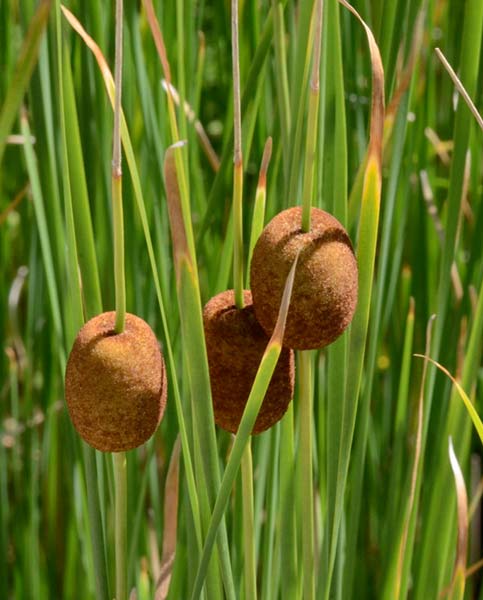
What to plant with Typha
As an aquatic plant, Typha needs to be placed in a marginal position in a pond or bog - this means it should be planted on the border where the water is at its most shallow. Good companion plants include blue Myosotis scorpioides (Water forget-me-not) with their blooming blue flowers that contrast the shades of brown. Iris pseudacorus provide pollinator-friendly yellow irises, which can be planted deeper within the pond due to their maximum height of 150cm. Pair Typha minima with a taller species: Typha angustifolia looks similar to minima, but grows to heights of 150cm and enjoys full sun and deeper mud.
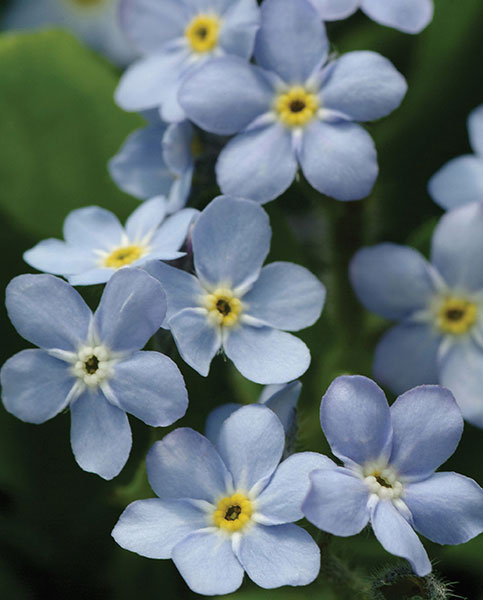
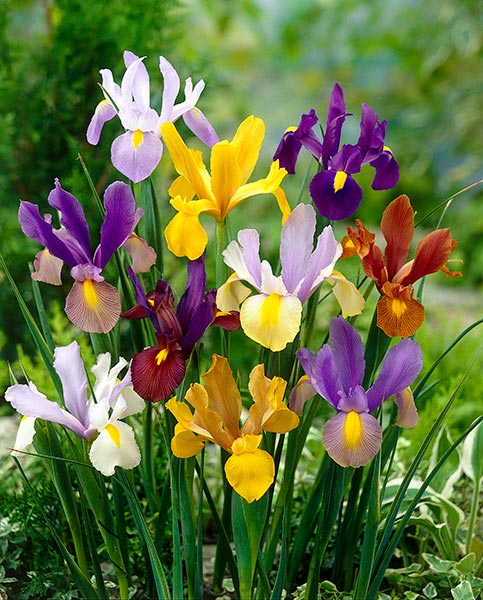
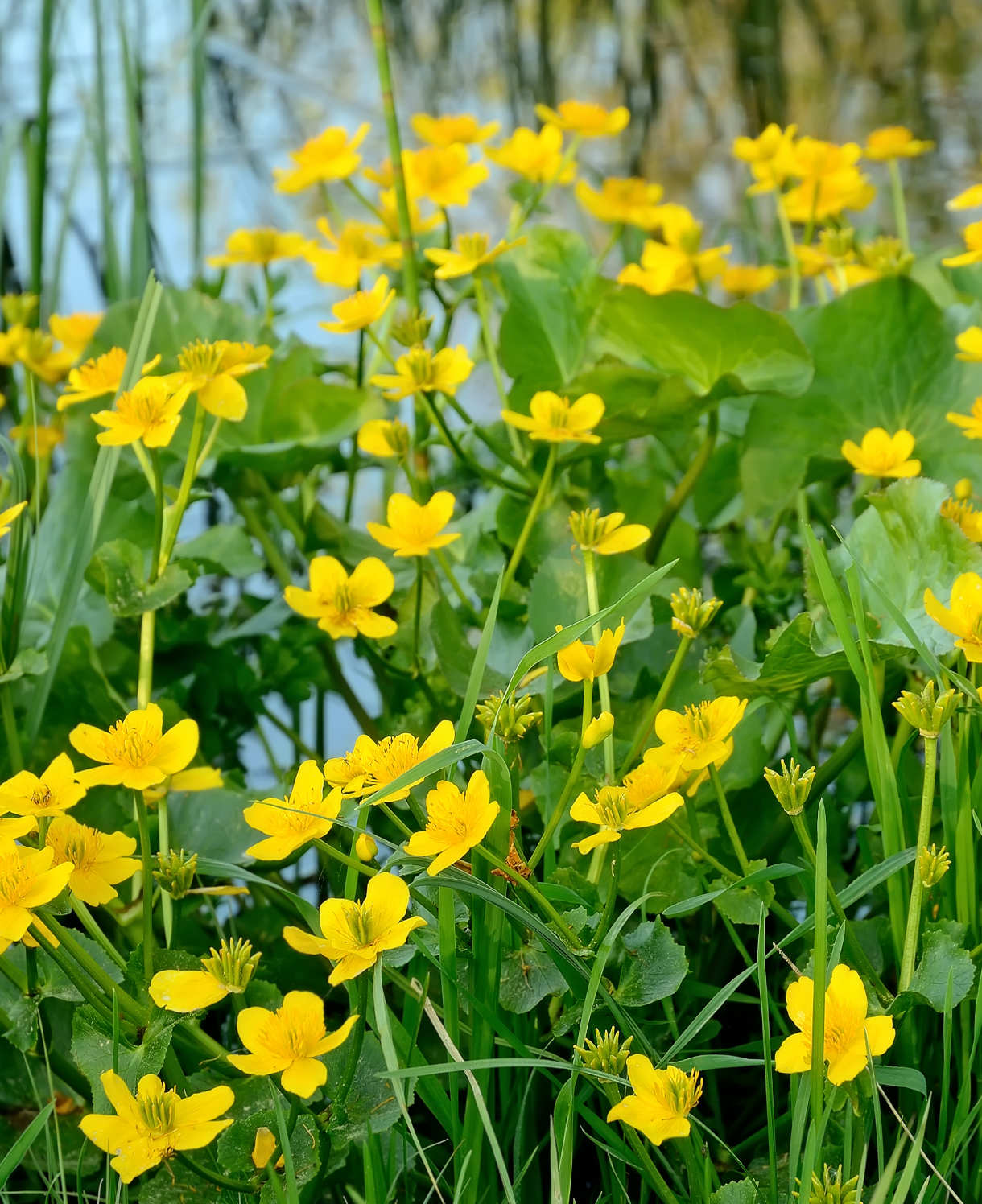
How to care for Tyhpa
Pruning & Deadheading
In spring, remove dead foliage and old flower stems. While they do not need cutting back, they can reproduce very quickly; you can prevent this by growing in an underwater pond container or basket.
Watering
If growing Typha in water, the aquatic compost will be wet at all times. You may wish to spray the foliage. If planted in a container, the water needs to be kept moist and boggy at all times - use moisture-retentive soil to help with this.
Cold Protection
Typha are fully frost-hardy, surviving temperatures as low as -15°c - so cold protection is not required.
Pests & Diseases
Typha are generally pest and disease-free.
How to propagate Tyhpa Minima
While Typha can reproduce quite quickly on its own, the best way to propagate the plant under your control is by division. Generally speaking, you should divide the plants once every 3-4 years as a matter of course.
Once the flowering season has ended, choose a healthy parent plant that is free of disease or damage. Gently pull it from the soil and cut away about ⅓ of the roots - cutting away more than ⅓ will damage the parent plant. Re-plant or re-pot your parent as soon as possible.
If you have taken away ⅓ of the roots as a clump, divide this further into smaller sections - each with its own root system. Prepare a pot (or pots) with soil, bury the roots and water in to settle.
You will need to water your Typha divisions often to keep the soil boggy. You can bring the pots inside or place them in a sheltered position outdoors away from wind but experiencing some daily sunlight. Re-pot each division as they outgrow each pot and plant successful divisions in the following season in their permanent position.
Common Typha Minima Questions
Are Typha minima native to UK?
No, Typha minima are not native to the UK. They orginate from North and South America, Europe and Africa.
How do you grow Typha minima?
Typha minima needs moist and boggy conditions to live in. While Typha minima can be grown in containers, it is often used as an aquatic plant in garden ponds. Plant in full sun at the edge (margin) of a pond at no more than 10cm of water depth.
Is Typha a hydrophyte?
Typha is known as hemicryptophyte hydrophyte; this means that it has adapted to growing in aquatic environments. However, Typha minima can also be grown in containers as long as there is plenty of moist, boggy soil available.





